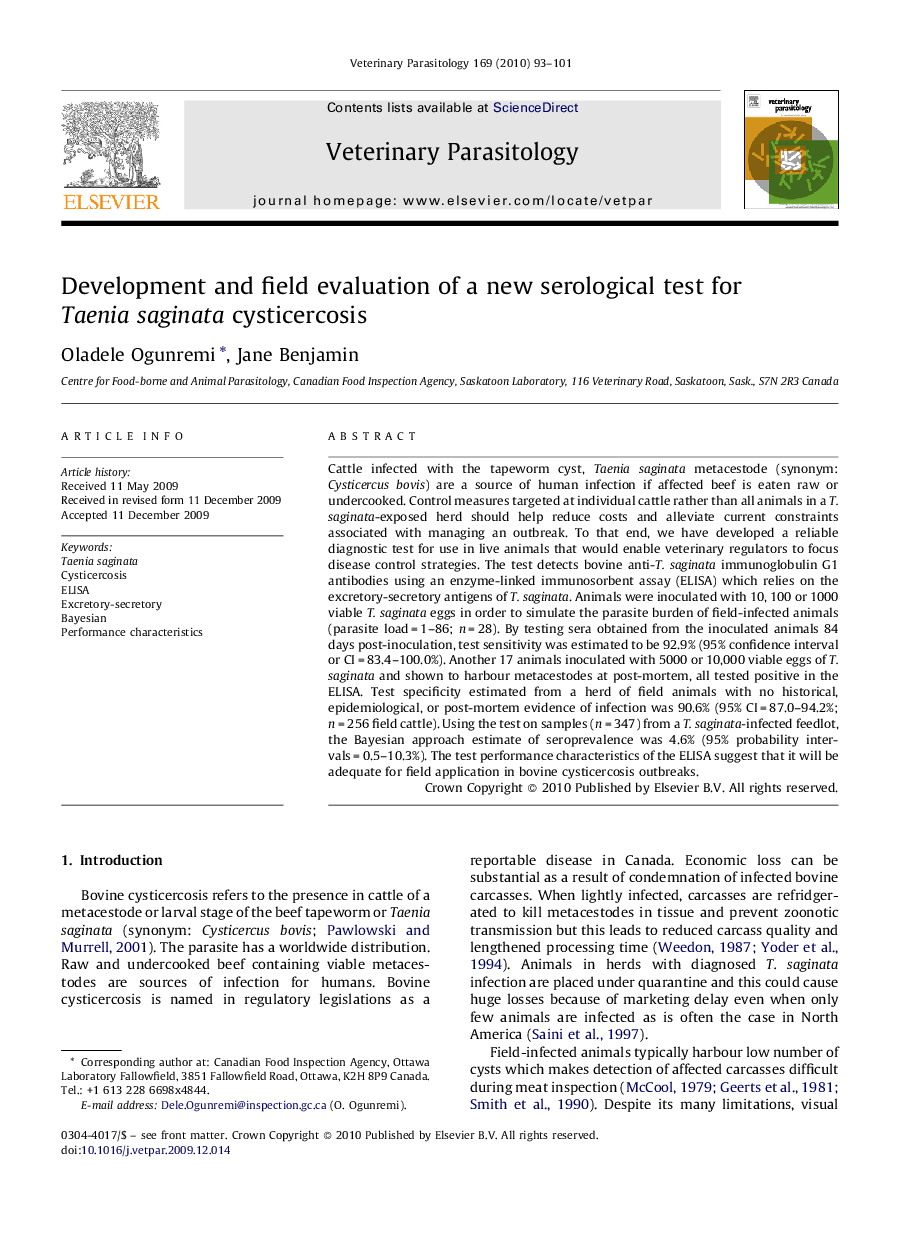| Article ID | Journal | Published Year | Pages | File Type |
|---|---|---|---|---|
| 2470717 | Veterinary Parasitology | 2010 | 9 Pages |
Cattle infected with the tapeworm cyst, Taenia saginata metacestode (synonym: Cysticercus bovis) are a source of human infection if affected beef is eaten raw or undercooked. Control measures targeted at individual cattle rather than all animals in a T. saginata-exposed herd should help reduce costs and alleviate current constraints associated with managing an outbreak. To that end, we have developed a reliable diagnostic test for use in live animals that would enable veterinary regulators to focus disease control strategies. The test detects bovine anti-T. saginata immunoglobulin G1 antibodies using an enzyme-linked immunosorbent assay (ELISA) which relies on the excretory-secretory antigens of T. saginata. Animals were inoculated with 10, 100 or 1000 viable T. saginata eggs in order to simulate the parasite burden of field-infected animals (parasite load = 1–86; n = 28). By testing sera obtained from the inoculated animals 84 days post-inoculation, test sensitivity was estimated to be 92.9% (95% confidence interval or CI = 83.4–100.0%). Another 17 animals inoculated with 5000 or 10,000 viable eggs of T. saginata and shown to harbour metacestodes at post-mortem, all tested positive in the ELISA. Test specificity estimated from a herd of field animals with no historical, epidemiological, or post-mortem evidence of infection was 90.6% (95% CI = 87.0–94.2%; n = 256 field cattle). Using the test on samples (n = 347) from a T. saginata-infected feedlot, the Bayesian approach estimate of seroprevalence was 4.6% (95% probability intervals = 0.5–10.3%). The test performance characteristics of the ELISA suggest that it will be adequate for field application in bovine cysticercosis outbreaks.
